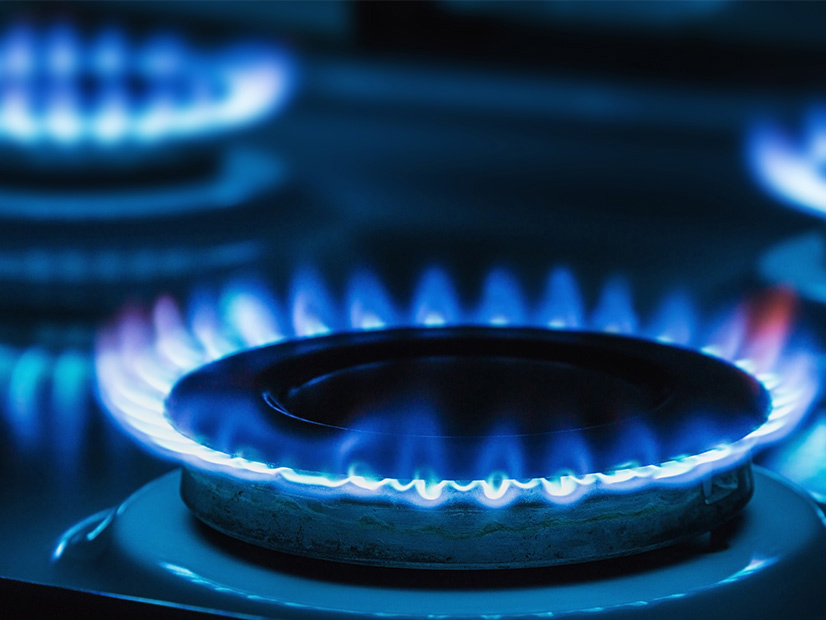
As more homeowners switch from natural gas to electric appliances, environmental researchers are thinking more about the fate of discarded gas appliances, speakers said at a Stanford University webinar.
“What happens to the old appliances?” said Chris Field, director of the Woods Institute for the Environment at Stanford, who moderated the session. “Are we just going to get a secondary market in junky gas appliances as a consequence of the push for electrification?” Field was relaying a question from a webinar listener.
Rob Jackson, a professor of Earth system science and a senior fellow at the Woods Institute, said that’s a question he’s been hearing a lot recently.
“If we just dump a bunch of gas appliances on the market and lower their cost, then we’ll make it more likely they’re used,” Jackson said. “I don’t know what the best approach for that is.”
Stephanie Greene, managing director of carbon-free buildings at the Rocky Mountain Institute, said incentives may be needed to address the issue of used gas appliances.
“Maybe not cash for clunkers per se, but some level of incentivizing, getting these older appliances out of the market entirely, is likely the right solution,” Greene said.
The webinar, which the Woods Institute hosted on Jan. 26, focused on electrification of the building sector. The idea behind building electrification is to phase out carbon dioxide emitting gas appliances, such as gas stoves, furnaces and water heaters, and instead use electric appliances, which may be fueled by clean energy.
Greene said that electrifying new buildings makes economic sense and will also help contractors, builders and the market in general get used to the electric technology. At the same time, homeowners should be offered incentives to replace gas appliances with electric when the gas appliances reach the end of their useful lives, she said.
When it comes to replacing gas appliances before the end of their useful lives, the decision depends on whether a homeowner has the financial means and wants to be at the forefront of new technology, Greene and other panelists said.
Methane Leakage Studied
Gas appliances contribute to GHG emissions in a couple of ways. The combustion of methane, the main component of natural gas, produces carbon dioxide. In addition, the appliances may leak methane, which is a potent greenhouse gas.
And methane leakage from gas stoves may be substantial, says new research from Jackson and colleagues at Stanford. The findings were published this week in the journal Environmental Science & Technology.
The study, which measured emissions from natural gas stoves in 53 California homes, found that up to 1.3% of the gas used by the stoves was emitted as unburned methane. More than three-quarters of those methane emissions occurred while stoves were turned off, suggesting the presence of leaks.
Another finding was that the age or cost of a stove didn’t seem to be related to the amount of emissions.
More than a third of U.S. households, or more than 40 million homes, use gas cooking appliances, the researchers said. They estimated that the amount of methane leaking from residential gas stoves in the U.S. each year has a climate impact comparable to annual CO2 emissions from 500,000 gasoline-powered cars.
The use of gas stoves can also cause nitrogen dioxide (NO2) to quickly build up in kitchens, especially if ventilation is poor or range hoods aren’t used, the study found. NO2 is a pollutant that may have harmful impacts on the human respiratory system, according to the Environmental Protection Agency.
Federal Efforts
Another speaker at the Stanford webinar was U.S. Sen. Martin Heinrich (D-NM), who discussed efforts at the federal level to promote building electrification. In November, Heinrich joined with other lawmakers to form the first bicameral Electrification Caucus. The group’s goal is to advance policies to accelerate widespread electrification.
Heinrich also led efforts to introduce in July the Zero-Emission Homes Act, which would provide rebates for buying and installing electric appliances in single-family homes and multifamily buildings. The bill includes additional support for low- and moderate-income households. A companion bill was introduced in the House that same month.
Heinrich said a version of his Zero-Emission Homes Act is included in the climate package that is part of the Build Back Better Act that was passed by the House. Although Build Back Better is facing roadblocks in the Senate, Heinrich said, the climate package seems to be the area that has the most agreement.
“I remain confident that we’re going to find a way to get many of those climate investments to the president’s desk,” he said.
